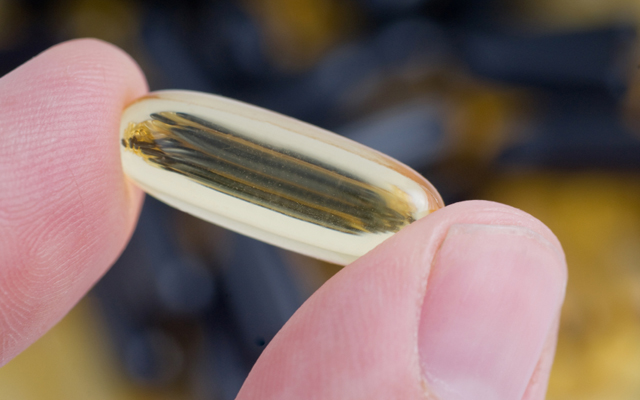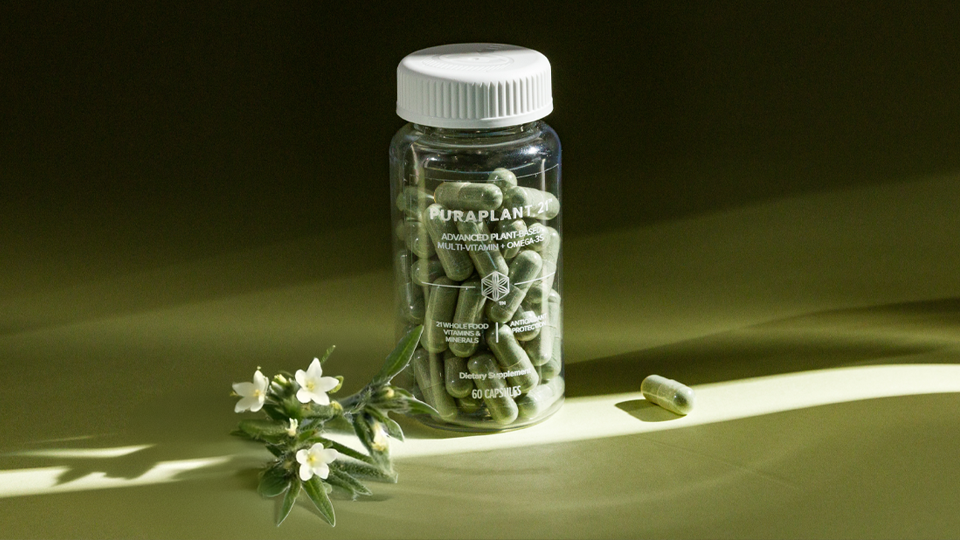Half a century of research has taught us that omega-3s are essential for health. Not a year has gone by without new studies finding out that more in our diets would be better to protect our hearts, our skin, our brains, our joints, and more. But as science progresses, myths have found their way into the conversation about these all-important fats.
Unfortunately, some of these myths could lead people to make poor choices for their health. Because of these issues, nutritional experts and scientists gathered last November in Las Vegas to set the record straight surrounding various omega-3 myths.
In his presentation, Ian Newton, managing director of Ceres Consulting, reviewed seven of the most common omega-3 myths. He said the majority of fish oil myths center around general misunderstandings about the different sources of these good fats and their physiological mechanisms such as absorption, bioavailability, and conversion.
For greatest benefit, Newton said, consumers would do best to stick to the type of omega-3s studied in the literature that are connected with the greatest benefits: the long-chained omega-3s derived from fish oil, eicosapentanaenoic acid (EPA) and docosahexaenoic acid (DHA). Fish-derived DHA and EPA turn out to be best for raising the body’s “omega-3 index,” which is a measure of levels of omega-3s in blood cells (1).
Myth #1: Flaxseed oil is an excellent source of EPA and DHA
One of the most common misconceptions is that flaxseed oil or other omega 3-rich plant oils are enough to meet people’s needs. These plant-based sources, however, only supply the short-chain omega-3, alpha-linolenic acid (ALA). Once absorbed, ALA has a poor time converting to the longer-chained DHA and EPA to raise a person’s omega-3 index.
The latest research shows that while low levels of fish oil lead to a higher omega-3 index even high intakes of flax seed oil do not (2, 3). The increases in blood cell levels of long-chain omega-3s from fish oil were also uniform, while any increases from flax oil was much more variable (2, 3).
Truth: Flaxseed oil is no substitute for fish oil for improving DHA and EPA blood levels.
Myth #2: Fish triglycerides are superior in bioavailabilty than ethyl esters
An old argument that has been going on for some two decades is that since the triglyceride form of fish omega-3s is more quickly absorbed it’s more bioavailable as opposed to fish oil in the form of ethyl esters (produced after ultra-purification).
But Newton says that this argument is not based on any science. To begin with, he said it doesn’t matter how quickly you absorb your fish oil, so long as you get it into plasma and tissues. While DHA and EPA in triglyceride form may show a faster increase in levels initially, the total amount of absorbed in the end is what’s important.
In addition, absorption is highly dependent on fat content of the complete meal. Any intake of fat will markedly improve absorption of ethyl esters. Taking a purified fish oil supplement with a regular meal should remove any worry about absorption.
Truth: Fish omega-3s in triglyceride form are not superior to ethyl esters in terms of bioavailability.
Myth #3: “Pharma Grade” is the best
While it makes for good marketing, the claim that a fish oil product is “pharmaceutical grade” is misleading. There’s really no such thing and FDA doesn’t recognize the term at all.
All fish oil is manufactured under strict conditions, such as molecular distillation. Whether you get fish oil from a pharmaceutical company or a nutraceutical company that follows all FDA regulations for Good Manufacturing Practices (GMPs), you’ll still be getting a quality product.
Truth: Don’t buy the “pharma grade” hype.
Myth #4: Liquid fish oil is better than softgels
Fish oil quality entirely depends on the manufacturer and refiner. It has nothing to do with whether it arrives in liquid form or softgel form—despite what some marketers might lead you to believe.
Softgels, however, are almost completely inert, which minimizes any degradation. In fact, softgels can have several years of stability if certain antioxidants like vitamin E tocopherols are included to prevent rancidity.
On the other hand, liquid fish oil can be subject to many conditions once the bottle is opened that can lead to degradation including heat, light, and oxygen.
Truth: It’s not impossible to find a quality liquid fish oil in a bottle, but it’s easier to be sure of freshness with soft gels.
Myth #5: Krill oil is superior to fish oil
Another argument that has come up in recent years is that long-chain omega-3s from krill oil are more easily absorbed in comparison to fish oil because they are in phospholipid form. But remember the take-away from the busting of the “triglyceride versus ethyl esters” myth?
Once again, it doesn’t matter how quickly long-chain omega-3s are absorbed so long as you eventually do absorb them. The goal should be just making sure to get enough daily.
And that’s where krill oil fails—providing high amounts of long-chain omega-3s. Generally the concentration of EPA and DHA in krill oil is low in comparison to fish oil.
Moreover, there is little comparative evidence that would suggest krill oil is superior to fish oil in providing benefits to the heart, brain, or any kind long-term, according to Newton.
Truth: No evidence suggests krill is superior to fish oil. Just get enough DHA and EPA, period.
Myth #6: Fish oil can increase bleeding time and be dangerous
With mounting evidence that fish oil is good for you, the question that naturally arises is, “How much should we be getting every day?” Of greatest concern are populations with certain medical conditions because too much fish oil has been thought to thin blood and increase potential of bleeding.
There have been several studies and reviews on the topic as related to those who’ve just gone through heart surgery or who are pregnant. In these studies, typical levels of EPA and DHA range between 1 to 4 grams per day. The studies’ results are unanimous, Newton says: fish oil in these amounts doesn’t appear to increase risk for clinically significant bleeding even in patients on antiplatelet or antithrombotic medications (blood thinners). Still, those with medical conditions are advised to always consult a physician before using fish oil.
Truth: Fish oil providing EPA and DHA up to 4 grams a day is entirely safe.
Myth #7: The ratio of omega-6 to omega-3 intake is highly important
The idea that it’s important to have a healthy ratio of omega-6 to omega-3 originally stemmed from the knowledge that the two essential fats can compete for some of the same pathways, such as eicosanoid cascades that produce either pro- and anti-inflammatory molecules.
Since much of the vegetable oils we eat are high in linoleic acid (LA), a type of omega-6, it led to concerns that too much could potentially lead to reduced levels of the type of beneficial molecules produced through omega-3 pathways (4). This, in turn, could lead to greater risk to disease.
But more recent studies show that while increasing fish oil intake improves omega-3 index, reducing LA intake doesn’t have any effect, Newton said. Nor does increasing LA in the diet lead to any increase in molecules produced through pro-inflammatory pathways (5). Those pathways appear to be tightly controlled and not influenced by LA intake.
The bottom line, Newton says, is just to focus on getting more omega-3 DHA and EPA from fish oil for nutritional benefits.
Truth: Don’t worry about LA intake; get more DHA and EPA.
References
- Harris WS, Von Schacky C. The Omega-3 Index: a new risk factor for death from coronary heart disease? Prev Med. 2004 Jul;39(1):212-20.
- Barcelo-Coblijn G, Murphy EJ, Othman R, Moghadasian MH, Kashour T, Friel JK. Flaxseed oil and fish-oil capsule consumption alters human red blood cell n-3 fatty acid composition: a multiple-dosing trial comparing 2 sources of n-3 fatty acid. Am J Clin Nutr 2008;88:801-9.
- Arterburn LM, Hall EB, Oken H. Distribution, interconversion, and dose response of n-3 fatty acids in humans. Am J Clin Nutr 2006;83:1467S-76S.
- Kris-Etherton PM, Taylor DS, Yu-Poth S et al. Polyunsaturated fatty acids in the food chain in the United States. Am J Clin Nutr 2000;71:179S-88S.
- Johnson G, Fritsche K. Effect of Dietary Linoleic Acid on Markers of Inflammation in Healthy Persons: A Systematic Review of Randomized Controlled Trials. J Acad Diet and Nutr. 2012; 112:7:1029-1041.






